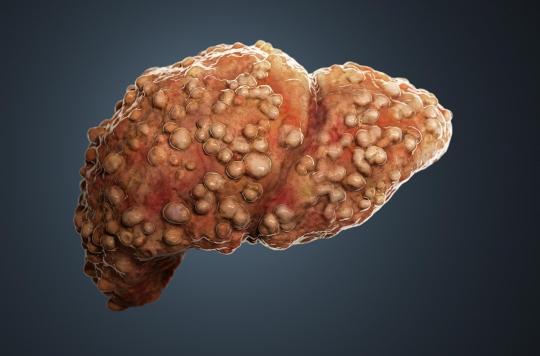The intestinal bacterium Klebsiella pneumoniae is one of the causes of “non-alcoholic fatty liver” disease, which affects almost a quarter of the world’s population. This is revealed by a study conducted by scientists in China.

Having an alcoholic liver without touching a single drink is possible! The disease, known as “non-alcoholic fatty liver disease” (also known as non-alcoholic fatty liver disease) affects almost a quarter of the world’s population. It is characterized by an accumulation of fat in the liver, which is not the consequence of high alcohol consumption. This last one is estimated at two standard drinks (20 g) or more per day for women and three standard drinks (30 g) or more per day for men.
“We were surprised to see the amount of alcohol this bacteria can produce”
Searching for the causes of non-alcoholic fatty liver disease, a dozen scientists working in China worked on the intestinal bacterium Klebsiella pneumoniae. “We were surprised to see how much alcohol this bacteria can produce,” said Jing Yuan, one of the authors of thestudypublished on September 19 in the American journal Cell Metabolism. When the body is saturated and cannot evacuate the alcohol produced by this bacterium, it is possible to develop fatty liver syndrome, even if one does not drink.
The researchers’ results come from an experiment carried out on an individual with severe non-alcoholic fatty liver disease and self-brewing syndrome (due to an abnormal proliferation of yeast in the intestine, which transforms absorbed carbohydrates into alcohol in the blood). As antifungal treatments proved ineffective, scientists turned their attention to other causes.
Strains capable of generating four to six times more alcohol
Thus, by examining the patient’s stool, the team found the presence of several strains of Klebsiella pneumoniae. A common bacterium, but whose strains found in the patient’s intestine are capable of generating almost four to six times more alcohol than those found in healthy people. The researchers repeated the experiment on 43 patients with non-alcoholic fatty liver disease and 48 healthy people. They found strains of the bacteria with medium and high alcohol-producing abilities in around 60% of patients, compared to 6% of healthy people.
From there, the scientists continued their work on mice. For three months, they injected them with Klebsiella pneumoniae from a patient with self-brewing syndrome. Result: after one month, the mice began to develop non-alcoholic fatty liver disease. In parallel, the liver of other mice, put under alcohol, showed the same state of deterioration.
“An intestinal environment more suitable for the growth and colonization of Klebsiella pneumoniae”?
If the researchers point out that non-alcoholic fatty liver disease can have several causes, they assure that it is “very likely” that the bacterium Klebsiella pneumoniae is one of them. A question remains: why does the bacterium produce a significant amount of alcohol only in certain people?
“It is likely that these particular bacteria enter the human body via environmental carriers, such as food, explains Di Liu, a member of the research team. But I do not think carriers are widespread – otherwise, we could “We would expect a much higher rate of non-alcoholic fatty liver disease. Also, some people may have an intestinal environment more suited to the growth and colonization of Klebsiella pneumoniae than others, due to their genetic material.” Next objective: to identify with certainty the factors that make some people more likely to develop a bacterium capable of producing a high quantity of alcohol.
.

















